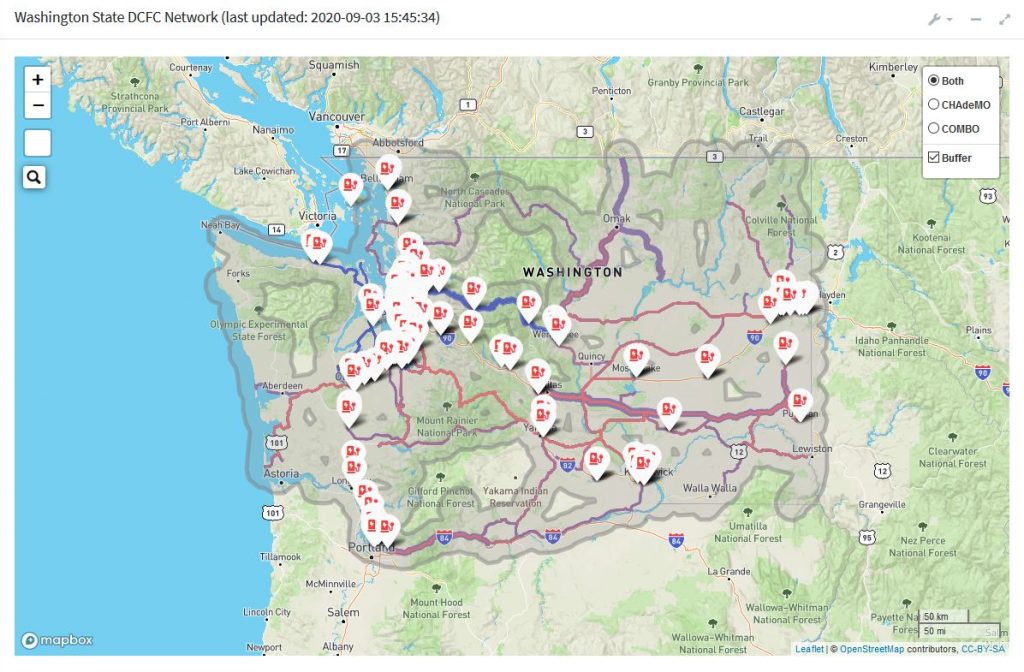-
April 27, 2021
PacTrans Technology Transfer Success Story 2019 #4: Simulation Environment to Optimize Public Investments in Battery-Powered Vehicle Charging Infrastructure

A research team at the University of Washington, led by UW Professor Don MacKenzie, recently developed a decision support system (EVI-DSS) to guide the WSDOT’s infrastructure development process. EVI-DSS is a model-view-controller application capable of supporting multiple users concurrently. It employs a PostgreSQL database as a model, two R Shiny web-apps as views and a NodeJS server for managing analysis execution requests.
To promote wider distribution and rapid dissemination of the program, leveraged PacTrans Technology Transfer Success Story funding to cleanup, optimize, package, and disseminate the code into an easy to use format, so that agencies can deploy it locally to benefit from its use. The team also deployed it in University of Washington as a test and support instance, and hosted several webinar/workshops to educate potentials users of its capabilities and functionalities.
The first webinar was part of Washington State Department of Transportation’s Webinar Wednesday series in November of 2020. The second and third were co-hosted by Professor MacKenzie and PacTrans and were delivered in December of 2020 and June of 2021, respectively.
If you’re interested to learn more there are a number of resources below:
- Documentation: The tool, ChargEVal which resulted as part of the research project is open-source and well-documented. The detailed documentation including the links for the demo can be found here: https://chargeval.readthedocs.io
- Software paper: A paper describing the software details for the project was written and is undergoing review before publication. The paper describes the motivation for the design, and the various sub-systems that make up ChargEVal. The code for the software can be found in the following repositories for anyone to access: https://github.com/s-t-lab/ChargEval & https://github.com/s-t-lab/evi-abm
- Videos: The following videos were published on YouTube for public consumption:
- ChargEVal software overview: This video describes the various sub-systems of ChargEVal, how they work with each other, and how the system can be monitored: https://youtu.be/Yh2a2VUoOxo
- EV Infrastructure Designer: This is the first view that users interact with and can be used to submit new charging station deployment scenarios: https://youtu.be/bBJi0hEugR4
- Results Viewer: The Results Viewer can be used to browse the results of a simulation. The three videos delve into how to view the summary statistics, details of BEVs and EVSEs respectively: https://youtu.be/YISKcNf7tNw, https://youtu.be/X8sMYhzkijQ & https://youtu.be/wPgRRTq-67M
- Trip Infeasibility Metric: The concept of trip infeasibility is explained: https://youtu.be/JD-ufJcsAag
- Using Redash: This video demonstrates how Redash can be used to compare the results from various simulations: https://youtu.be/8ud7pJlq8H4


